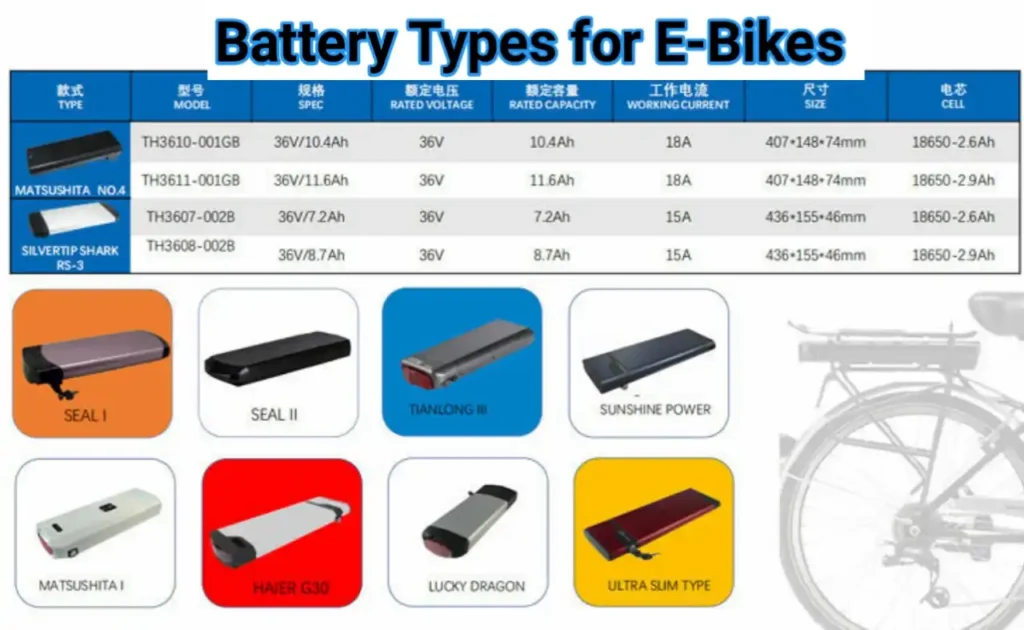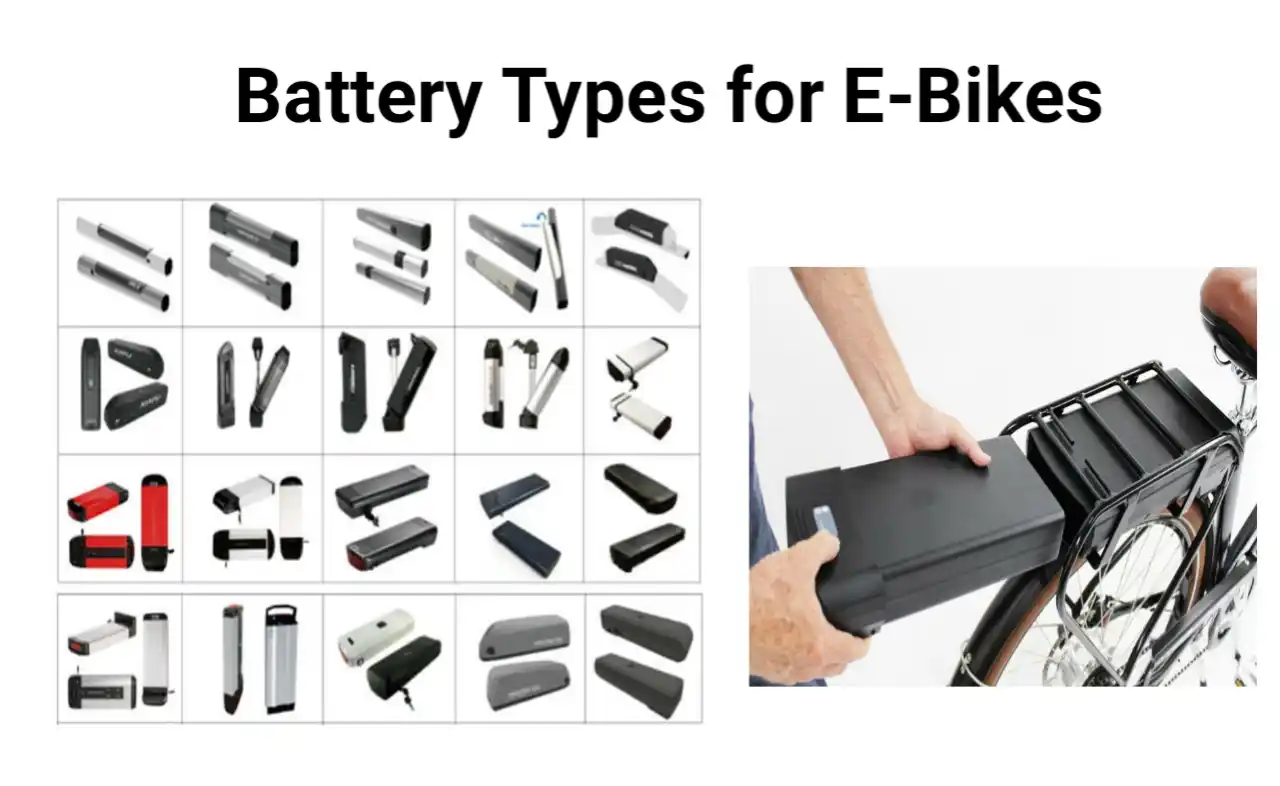Battery Types for E-Bikes
Electric bikes(e-bikes) have surfaced as a popular and eco-friendly way to get around, offering a mix of pedal power and electric backing. But one of the most pivotal factors of an e-bike is its battery, the silent machine that energizes your trip. Choosing the right battery types for e-bikes can significantly impact your riding experience, affecting range, performance, and indeed safety. So, buckle up as we claw into the fascinating world of electric bike batteries! Read:2029 E-Bikes
Table of Contents
The Big Three Battery Types for E-Bikes
While colorful battery technologies live, three main contenders dominate the e-bike geography:
- Lithium- ion( Li- ion): The reigning champion, Li- ion batteries boast high energy viscosity( meaning they store a lot of power in a small package), featherlight design, and long dates. Subcategories like Lithium Iron Phosphate( LiFePO4) offer enhanced safety and life, while Lithium Nickel Manganese Cobalt Oxide( NMC) provides a lesser power affair.
- Nickel- essence hydride( NiMH):A mature technology, NiMH batteries are slightly heavier than Li- ion but offer decent range and a lower price point. They perform well in colder temperatures but have a shorter lifetime and suffer from” memory effect,” impacting capacity if not completely charged regularly.
- Sealed lead- acid( SLA): The most affordable option, SLA batteries are big and heavy, limiting range and dexterity. They also bear further conservation and have shorter dates compared to Li- ion and NiMH. Still, their robust construction makes them suitable for rough terrain and extreme rainfall conditions.
Choosing the Right Battery
Opting for the ideal battery involves striking a balance between several factors:

- Range:How far do you generally ride? Li- ion batteries, with their high capacity, generally offer the stylish range, followed by NiMH and SLA.
- Performance:Do you need an important boost for hills or prefer a gentle help? Li- ion batteries deliver the most power, while NiMH and SLA pause before.
- Weight: Lighter bikes offer better running and project. Li- ion batteries are the clear winners then, while SLA batteries add significant weight.
- Budget: Li- ion batteries come as a decoration, while SLA batteries are the most budget-friendly. NiMH falls nearly in between.
- Terrain and climate: Do you ride in extreme temperatures or rough terrain? SLA batteries handle these conditions more, while Li- ion and NiMH prefer moderate surroundings.
Battery Care:Keeping Powerhouse Healthy
Just like any other investment, proper care is essential for maximizing your battery’s lifetime and performance: Read:Electric Dirt Bikes
- Avoid extreme temperatures: Heat and cold waves can degrade battery life. Store your e-bike in a cool, dry place and avoid charging in axes.
- Charge regularly: Do not let your battery fully drain. Regular charging helps maintain its health.
- Use the right charger:Always use the charger handed by the manufacturer or one specifically designed for your battery type.
- Avoid deep discharges: Deep discharges( fully draining the battery) can damage cells. Aim to keep your battery above 20 charge.
- Clean and check regularly: Wipe down your battery outstations and check for any physical damage or erosion.
Future of E-Bike Batteries
The world of e-bike batteries is constantly evolving, with promising new technologies on the horizon:
- Solid- state batteries: These coming- generation batteries offer increased safety, briskly charging, and indeed longer dates. While still in their early stages, they hold immense eventuality for the future of e-bikes.
- Graphene batteries:This revolutionary material boasts the eventuality forultra-fast charging and indeed advanced energy viscosity, potentially unleashing extended ranges for e-bikes.
Final Thought
Powering Your E-Bike Journey Choosing the right battery is pivotal for a smooth, pleasurable riding experience. By understanding the different types, your riding needs, and proper care practices, you can ensure your e-bike keeps buzzing with power for times to come. So, hit the road with confidence, knowing you’ve got the right battery types for e-bikes backing you up! Read:Best Utility E-bikes
FAQs
Q How long does an e-bike battery last?
lifetime varies depending on battery type, operation, and care. Li- ion batteries generally last 5- 7 times, while NiMH and SLA have shorter dates of 3- 5 times.
Q Can I replace the battery on my e-bike?
Yes, utmost-bikes have interchangeable batteries. still,
